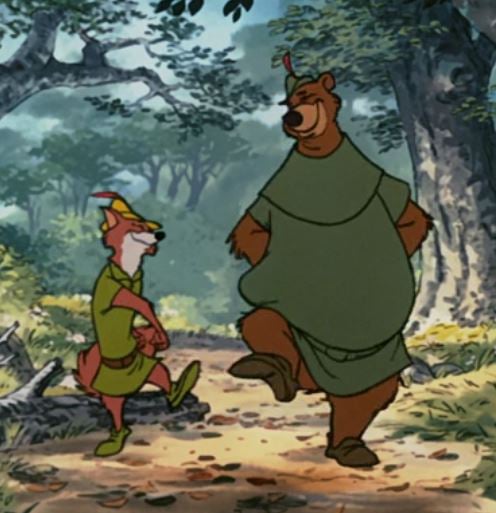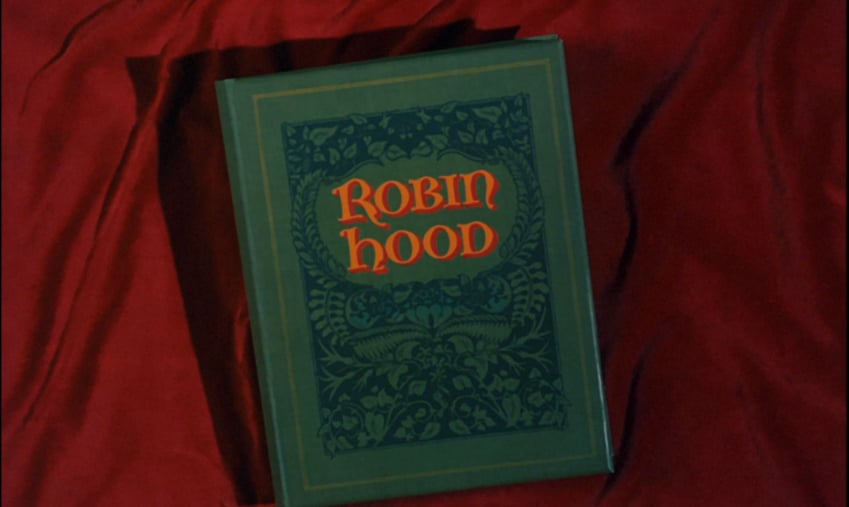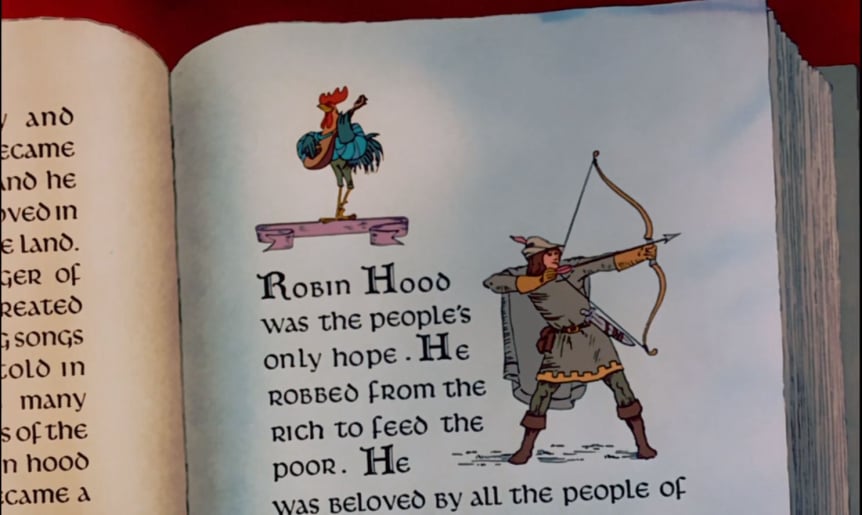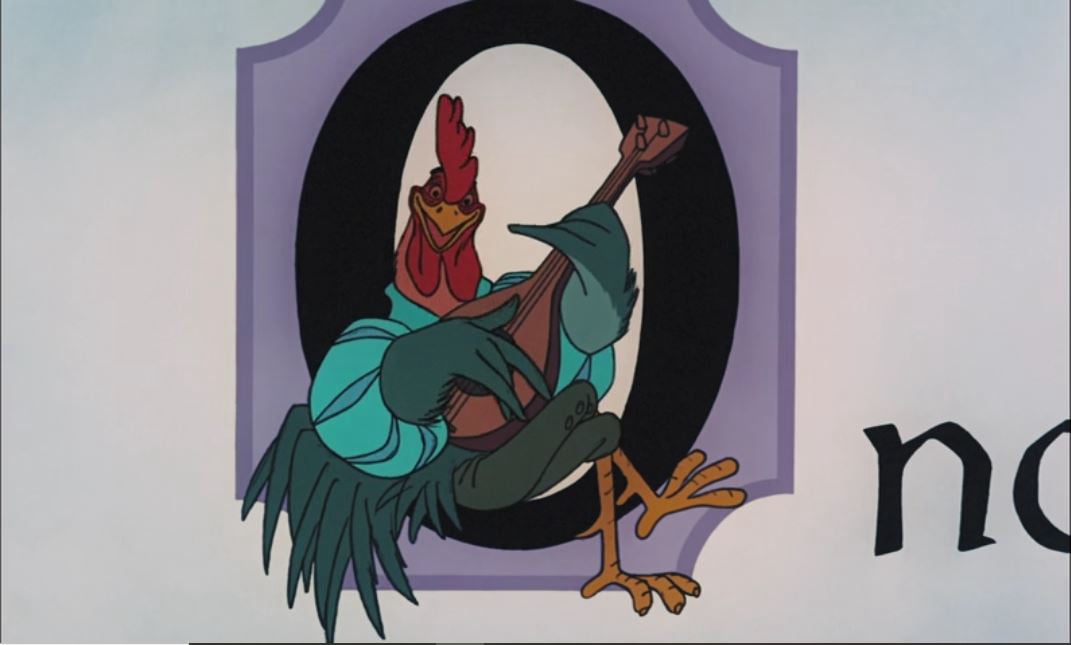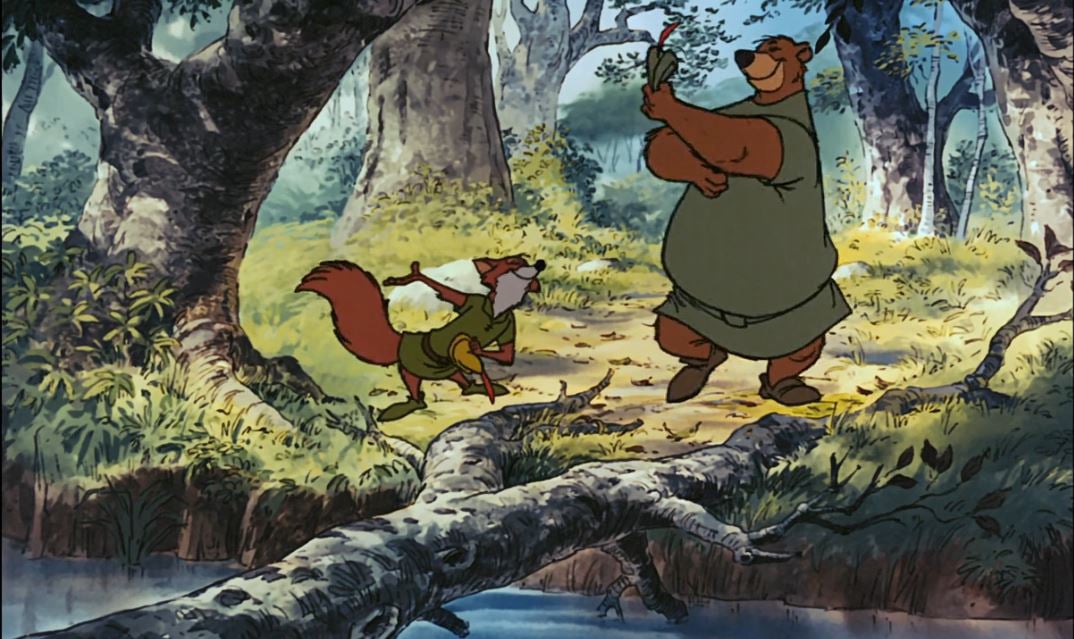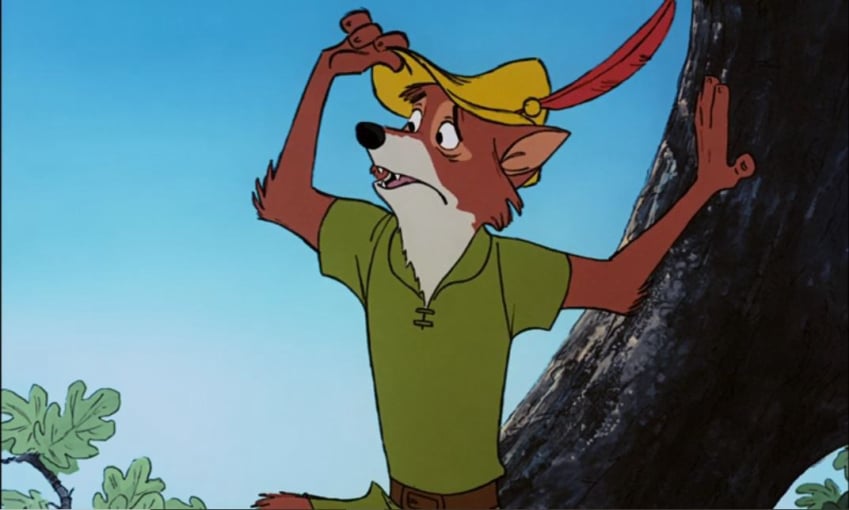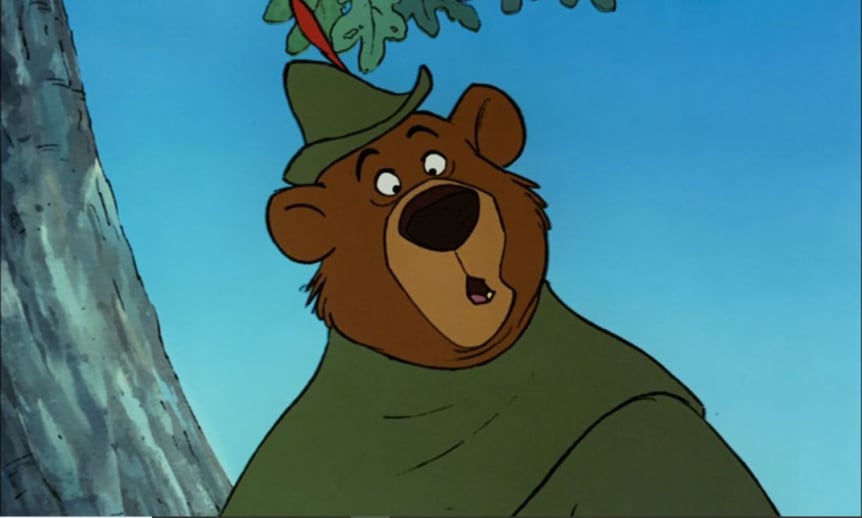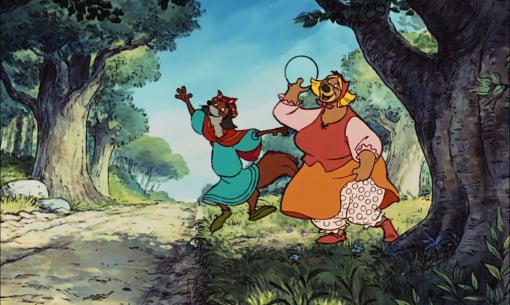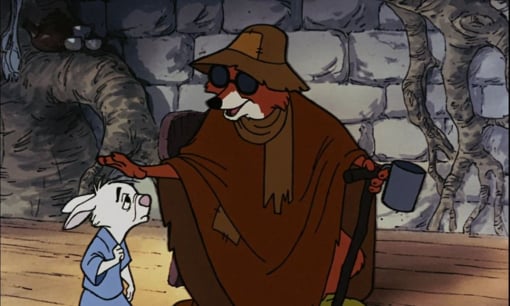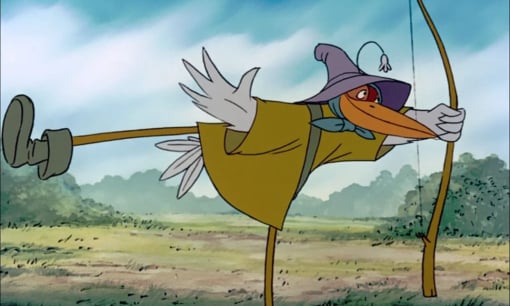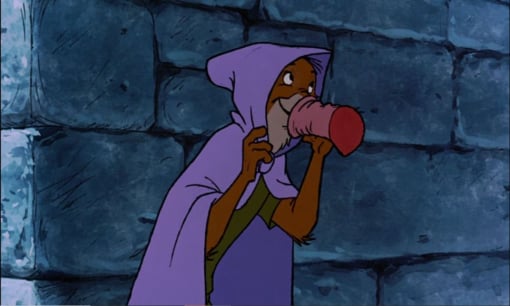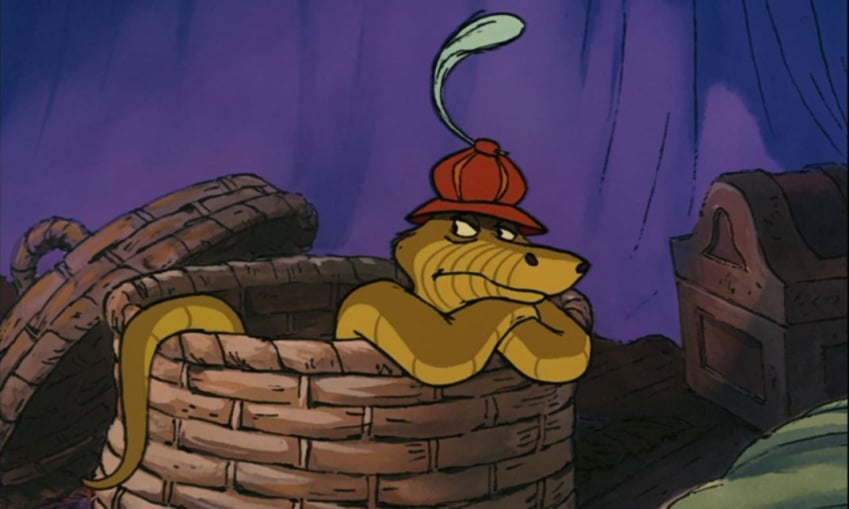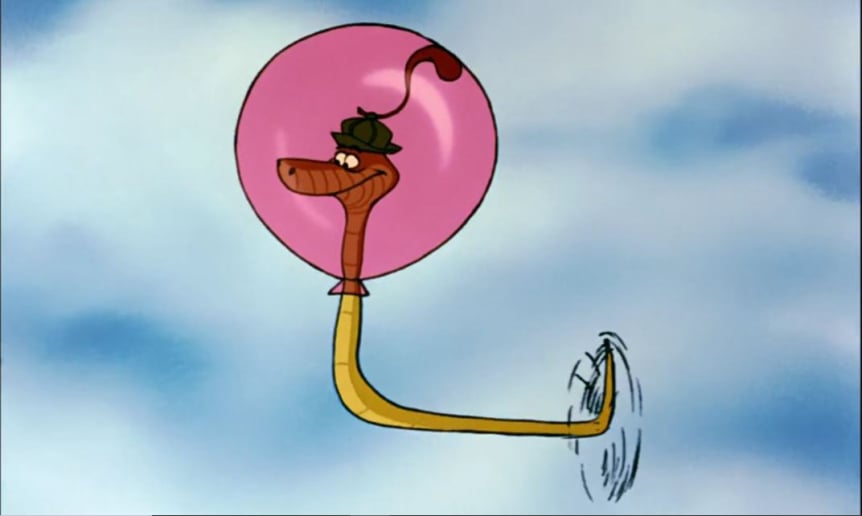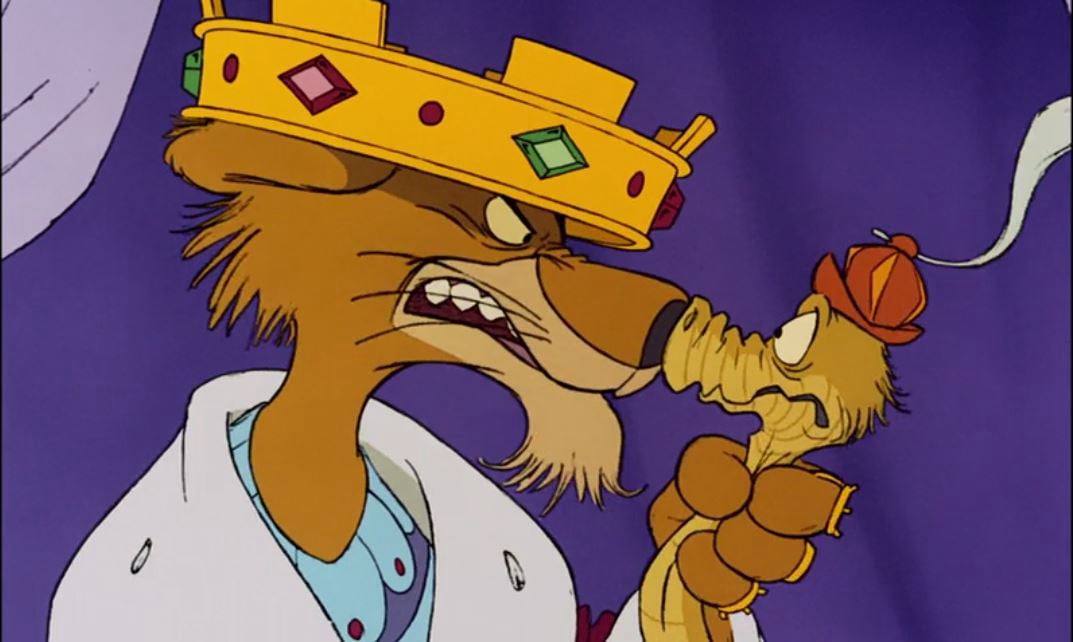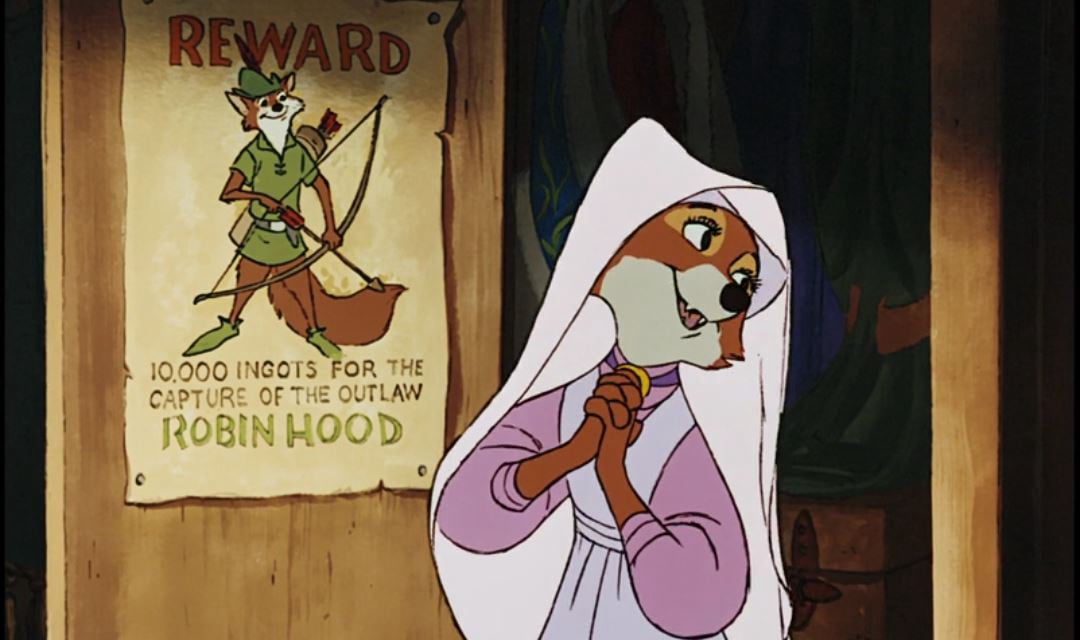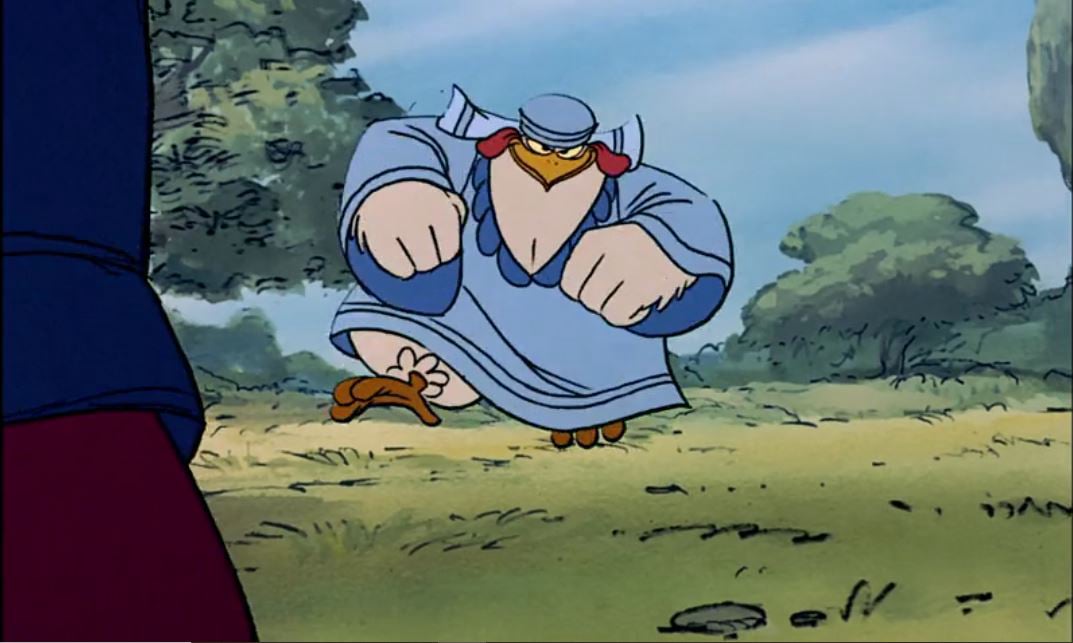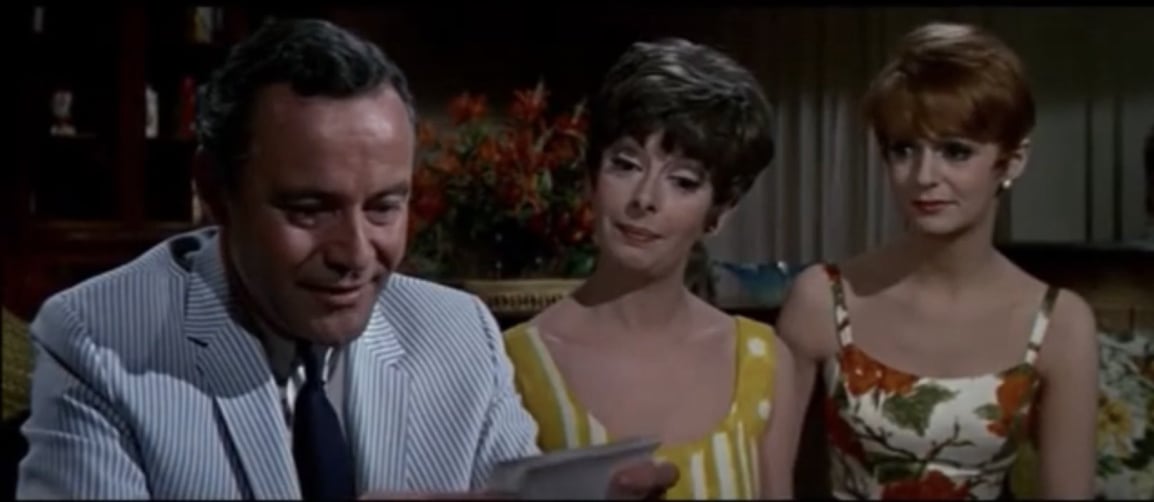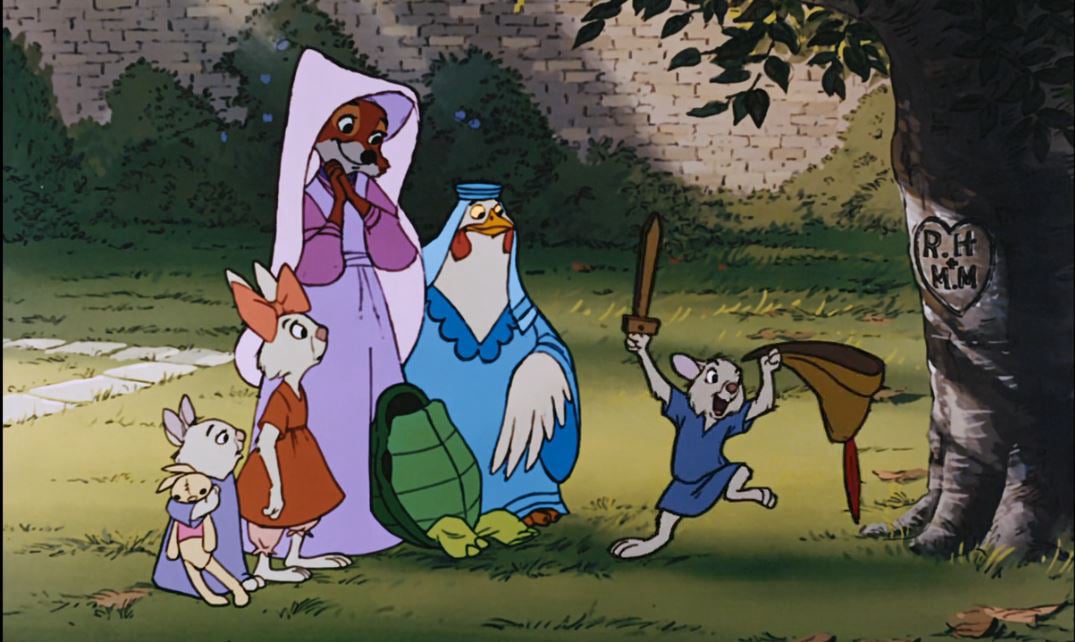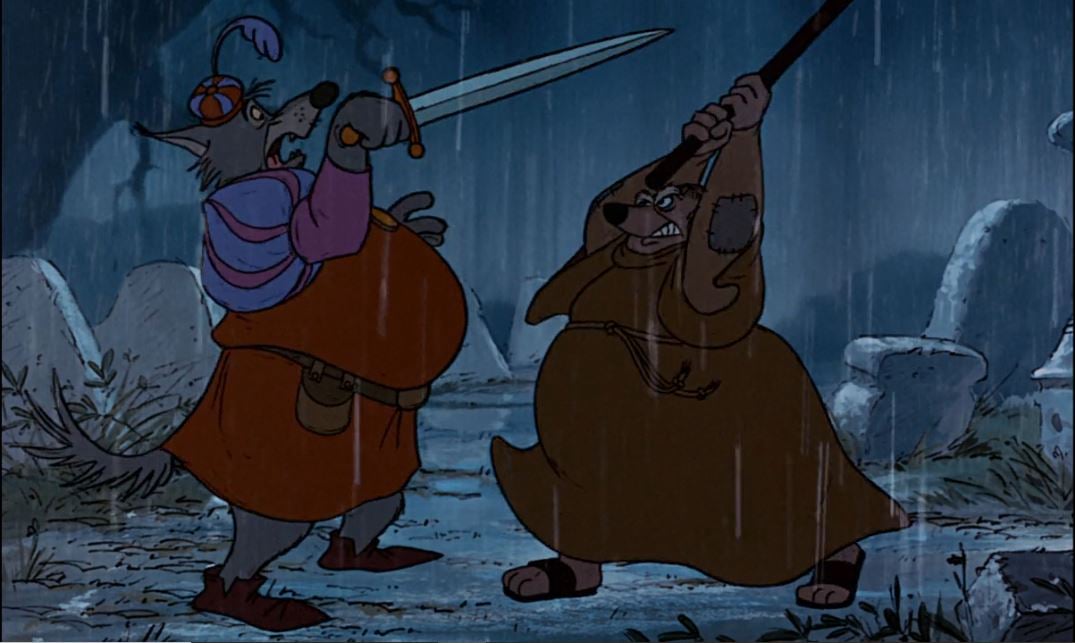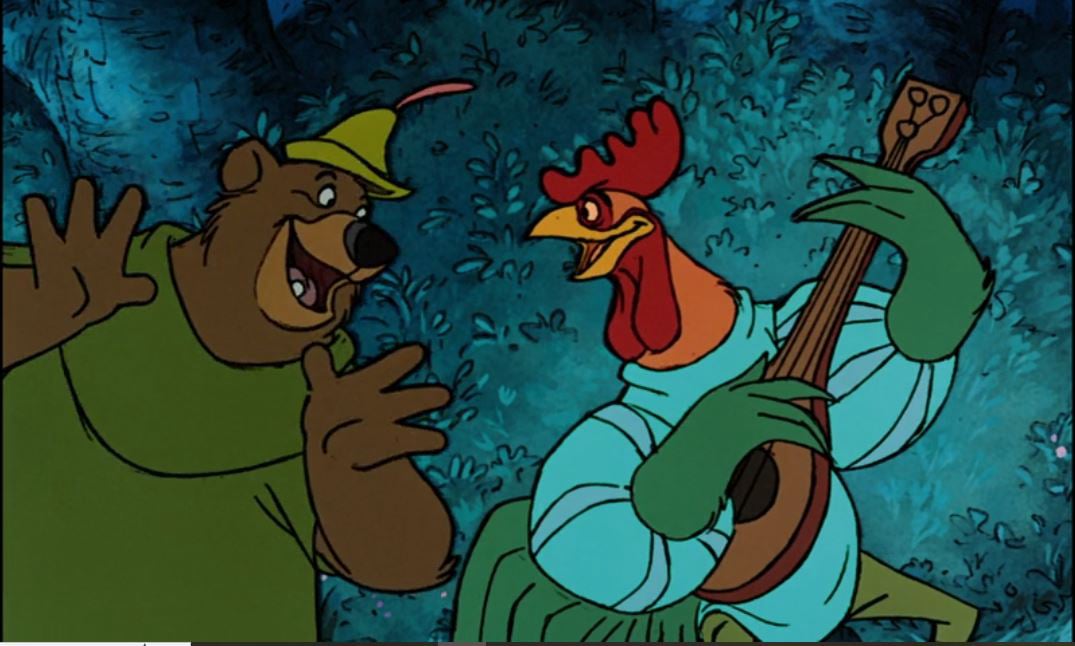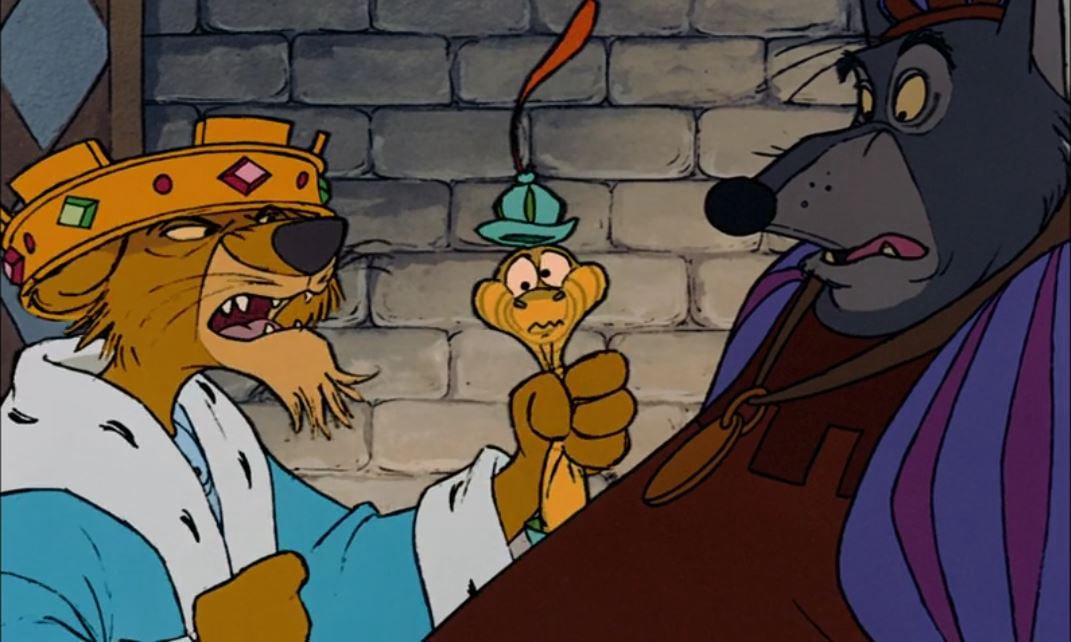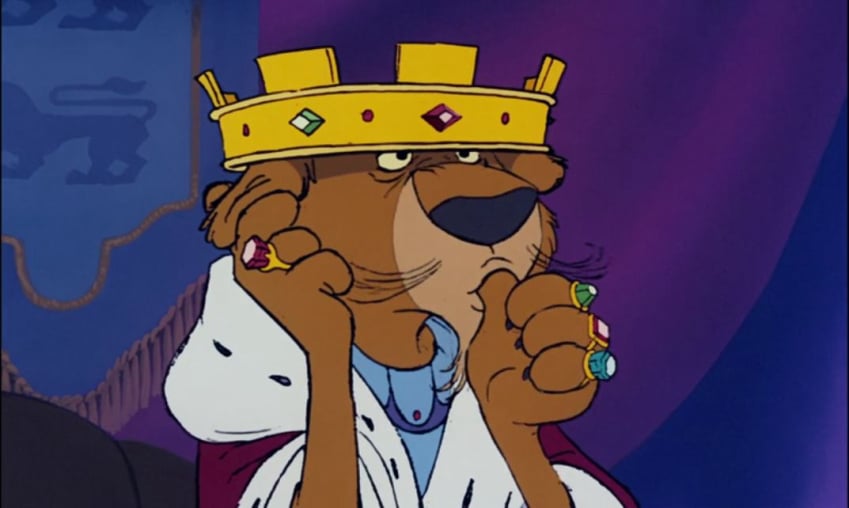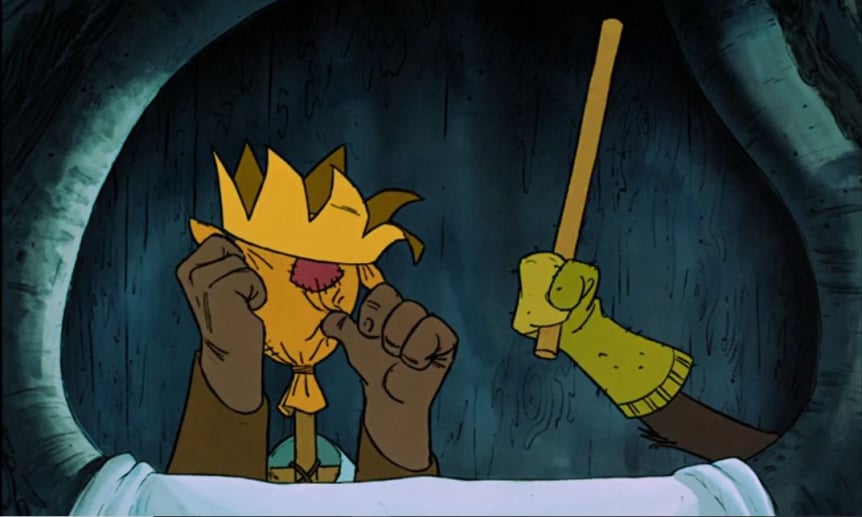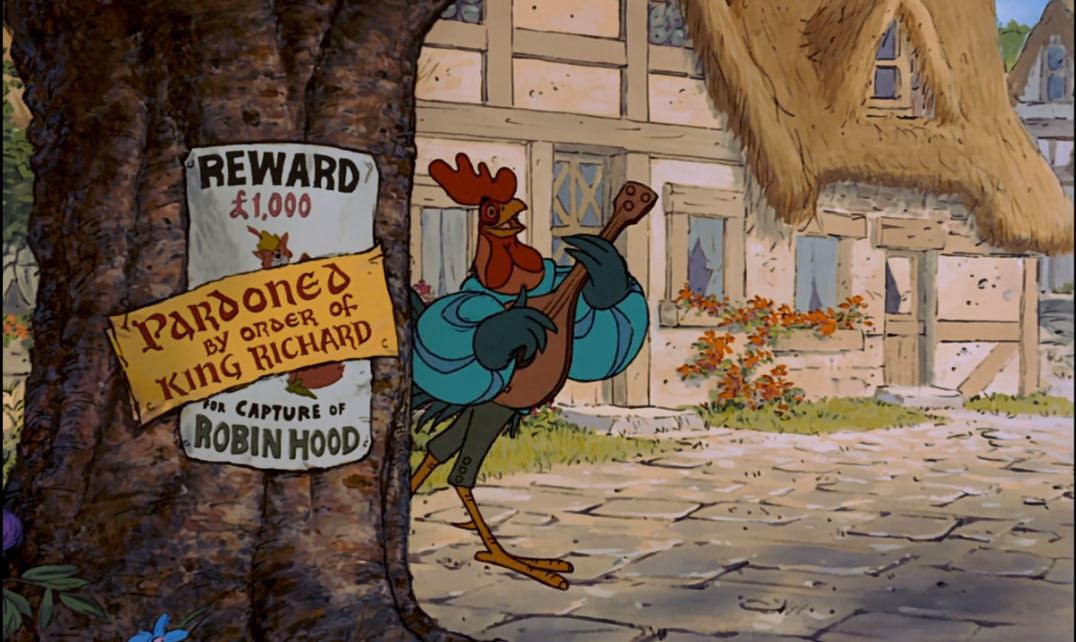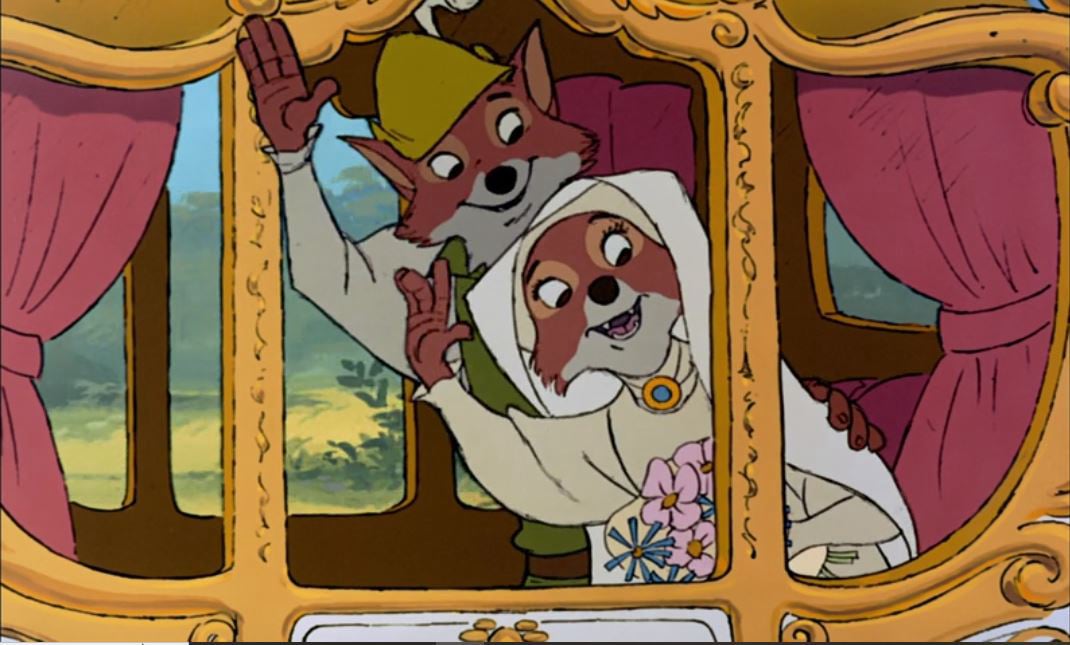England and America
And let's look at those two people walking through the forest: Robin Hood and Little John. Or as they usually refer to each other Rob and Johnny.
Robin Hood is voiced by Brian Bedford -- an award-winning British actor who would later emigrate to Canada and become a fixture at that country's premier Shakespeare festival. There is something about Bedford's Robin Hood voice that's comforting -- a trickster whose voice exudes decency, propriety and fair play -- along with a dollop of self-doubt.
Little John is voiced by Phil Harris, an American actor and singer, and self-identified southerner, with a more laid back style of speech.
Peter Ustinov, Terry-Thomas, Monica Evans and Carole Shelley are also all recognizably British. Roger Miller, Pat Buttram and Andy Devine are quintessentially American. Buttram (the Sheriff of Nottingham) and Devine (Friar Tuck) were both notably sidekicks to screen cowboys Gene Autry and Roy Rogers.
Vincent Canby, the reviewer for the New York Times, said of Miller's voice in particular that it gave the film "a decidedly odd but not unpleasant country-and-Western flavor." The blending of English folklore and American tropes works.
Both this film and the 1952 live-action Disney movie stress that Robin Hood steals taxes. Tax robberies have been a part of the Robin Hood legend since the 17th century, but the Disney focus on that aspect of the legend taps into the foundational history of America -- events such as the Boston Tea Party. The film even merges the anti-tax narrative with other forms of American patriotism. Friar Tuck paraphrases Frank Loesser's World War Two patriotic song Praise the Lord and Pass the Ammunition as "praise the lord and pass the tax rebate."
Ken Anderson, the Disney animator who first devised the film's characters and concepts for Robin Hood, originally pictured the entire film taking place in the American south. He was harking back to the controversial (and now unavailable) 1946 Disney film Song of the South, which blended animated sequences of Br'er Rabbit and other animals with live-action. Both Br'er Rabbit and Robin Hood are trickster characters who outsmart other animals. While the finished film is officially set in the medieval England, traces of the original concepts remain. Buttram's sheriff may dress in medieval clothing, but his demeanour suggests he's more the kind of sheriff who would cause trouble for The Dukes of Hazzard instead of Robin Hood.
It's usually said that Robin's foxy roots began in Walt Disney's interest in the medieval trickster Reynard the Fox. Various animated properties featuring Reynard had been on the books for decades. Ken Anderson even worked on a planned film of Chanticleer, which would have featured Reynard as the villain. And yet in the interviews recorded in Jack of All Trades by Paul F. Anderson, Ken Anderson denied the connection between Robin Hood and Reynard.
Little John's routes are perhaps easier to trace. He resembles Baloo, the sloth bear in the 1967 Disney film The Jungle Book. Both films are directed by Wolfgang ("Woolie") Reitherman, and both characters are voiced by Phil Harris. There might also be a touch of Br'er Bear in Little John's DNA.
As for the rest of the Merry Men... there aren't any. Robin and Little John have friends and allies, but none seem to be actually part of their outlaw band. The only indication to the contrary is a line in the song The Phony King of England. "Ah, but while there is a Merry Man / In Robin's wily pack." Originally, there were to be more in the gang, but the films creators decided on a buddy feel, similar to recent westerns like Butch Cassidy and The Sundance Kid.
